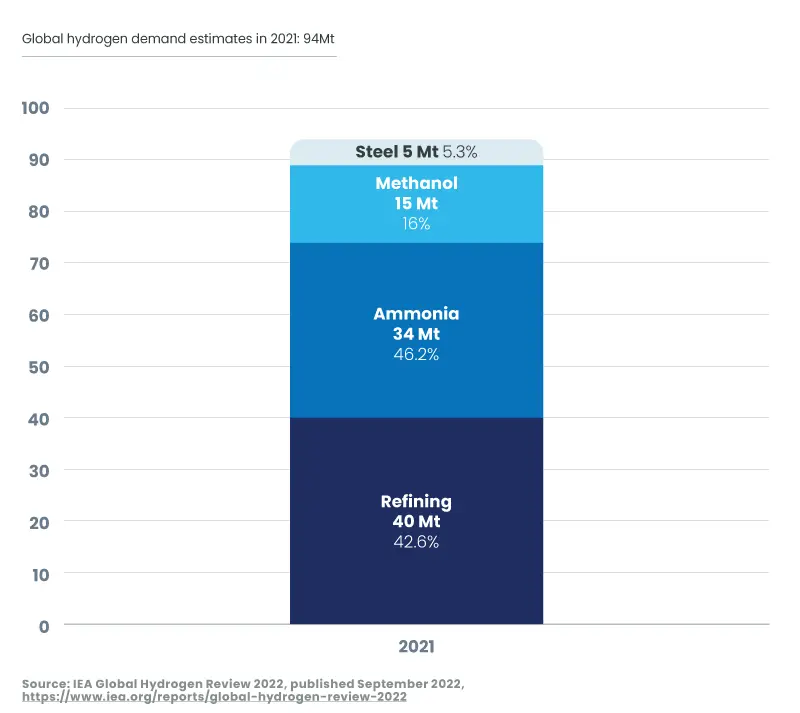The states of the Hydrogen matter: from a fluid situation to more solid progress
At the peak of its hope and hype in 2020-21, hydrogen was making the headlines and was seen as the number one solution to decarbonization. Three years later, it is time for a reality check. What’s a reasonable scenario and where are the opportunities?
While the International Energy Agency estimates that hydrogen would only mitigate 6% of the cumulative emissions reductions needed under its net zero scenario, we believe its role will be key for the so-called hard-to-abate industries (steel, chemicals, heavy-duty transportation and shipping) as these have few alternative options to decarbonize.
Near-term, hydrogen’s outlook looks bright on the industrial demand side, with 94 million tons in 2021[1].

Longer-term, demand scenarios vary but in any case estimates imply a demand between 5 and 7 times higher than that in 2021[2]. Besides, policymakers are not shy in their ambitions to support hydrogen growth. Clean hydrogen subsidies have more than quadrupled over the past two years[3], which we believe should unlock actual funding and accelerate investment decisions on the ground.
Read more on the hydrogen opportunities in our white paper
[1] International Energy Agency, Global Hydrogen Review (September 2022)
[2] Candriam, IEA, Hydrogen Council, bp, Deloitte, 2023
[3] BloombergNEF, August 2023


 ;
;